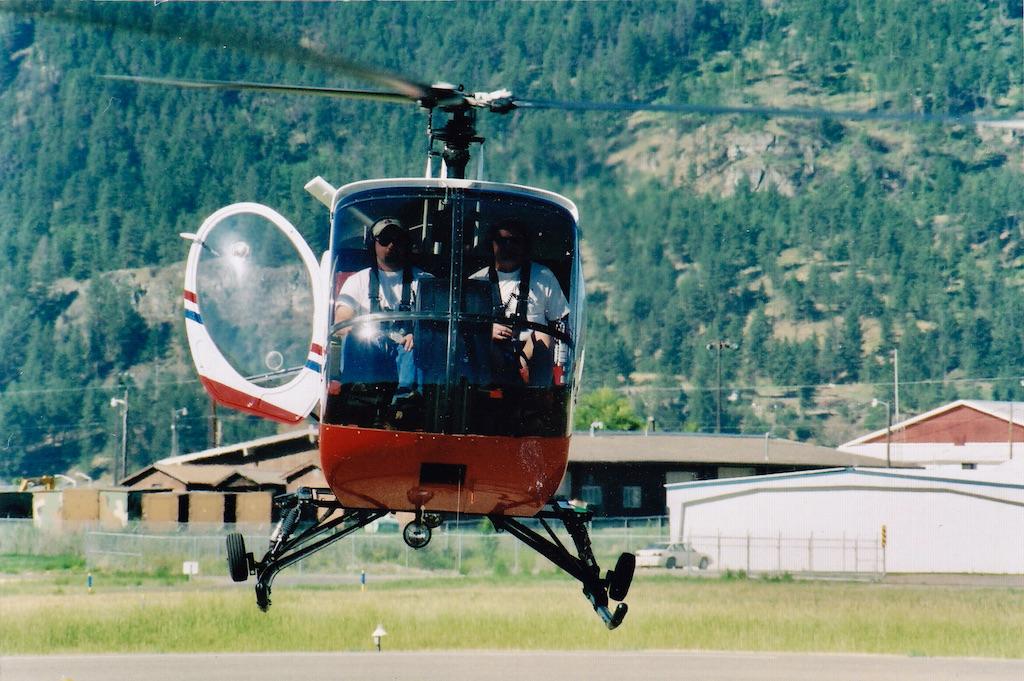
This autorotation practice by the author in Montana illustrated a higher rate of descent, reduced rotor RPM build in autorotation, low initial rotor RPM response, the requirement for a higher flare height and reduced engine performance for the go-around.
There are various flight conditions in which a helicopter will experience significant oscillations that can be difficult to control, and the recommended action is to deliberately place the helicopter into an autorotation. For example, the Robinson R22 flight manual instructs pilots to perform an autorotation in the event of unanticipated right yaw or to be prepared for an autorotation in the event of a malfunction of the clutch.
The point is that unlike autorotation practice in which the training maneuver begins from a stable condition (and no surprise), these events occur suddenly and create immense pitch, yaw and/or roll oscillations. Furthermore, these produce a cacophony of somatosensory illusions that can interfere with a pilot’s ability to focus vision and make accurate, fine-tuned muscle movements.
An example of the latter situation occurred to the pilot of a Eurocopter EC-130 while conducting a sightseeing flight near Kalapana, Hawaii, on March 5, 2020. The pilot detected the onset of a significant, high frequency vibration. As the helicopter slowed, the 7,878-hour pilot raised the collective and applied right tail rotor pedal, but the nose of the helicopter veered to the left. The pilot eventually applied full right tail rotor pedal, but the nose of the helicopter continued to the left.
About 200 ft. above ground level, with the right tail rotor pedal fully depressed, the helicopter began to spin to the left. The pilot attempted to stop the spin to no avail and eventually closed the throttle and performed a hovering autorotation. Two occupants received minor injuries and four others were uninjured. Post-accident investigation found a fracture in a tail rotor blade in the fenestron.
Clearly there is no safe method to replicate these abnormal motions in flight training. Unless a pilot has access to a flight training device or simulator that can accurately replicate these malfunctions and provide the sensory “wild ride,” it is entirely likely that a pilot will have no hands-on training in the proper response to these emergencies.
Fuel Mismanagement Accidents

The pilot of a Robinson R44 was conducting agricultural application flight operations on July 27, 2020, near Hebron, Nebraska. During the initial climb-out, the pilot detected a power loss and initiated an autorotation into a cornfield. Substantial damage resulted to the aircraft’s fuselage, tail rotor and horizontal/vertical stabilizers.
Fuel drained by accident investigators from the gascolator, or fuel strainer, revealed a large quantity of water. On the evening prior to the accident, over 4 in. of rainfall had occurred at the airport. A fuel cap may have inadvertently been left off a fuel storage tank, allowing water to enter the tank. The operator admitted that rushing contributed to loading unfiltered fuel into the helicopter. The pilot did not sump the helicopter’s fuel tanks as required by the flight manual. The NTSB determined the loss of engine power was caused by water contamination in the fuel system.
These self-inflicted errors from fuel mismanagement, which included either fuel contamination or fuel exhaustion, occurred in seven accidents in the data sample. To put this into perspective, roughly 10% of the autorotation accidents in the four-year period could have been prevented through proper fuel management procedures.
Importance Of Realistic Training
The NTSB’s investigation of the accident emphasized the importance of realistic autorotation training in all environmental conditions. However, in-flight training of autorotations requires tightly controlling as much risk as possible. This includes no “surprise” simulated engine failures, and not practicing the maneuver in less than “good” conditions.
The problem is that in the real world, an autorotation can occur at any moment without warning and during environmental conditions that are adverse, such as experienced by aerial firefighting helicopters near a wildfire. In-helicopter autorotation training has the further disadvantages of being time-consuming and expensive.
The author’s hands-on experiences in the EC-135 Level D full-motion simulator at Metro Aviation’s Training Center in Shreveport, Louisiana, and the Loft Dynamics (formerly VRM Switzerland) H-125 flight training device in Zürich, Switzerland, explored the realism to practice abnormal flight conditions, including autorotations.
The advantages of a simulator are clearly evident during the practice of emergency procedures. Simulators allow a demonstration of an ideal maneuver as well as how not to do the maneuver, presenting common errors and ways to avoid them. Dozens of emergency maneuvers can be performed during a two-hour training session, many more than could be done in an actual rotorcraft in the same time frame. Risk-free practice of these maneuvers for variations in rotorcraft weight, density altitude, wind speed, and direction show how each factor will individually or in combination affect performance of an autorotation.
How do we provide sufficient training to pilots to make certain they are proficient in the complex emergency procedures in a rotorcraft under a variety of real-world conditions?
The NTSB’s “Safety Through Helicopter Simulators” safety alert provides a clear recommendation. “Consistent, standardized simulator training will help prepare pilots for the unexpected and will decrease the risk of an accident,” the safety board says. “Simulators can be a helpful tool for operators to provide pilot training on autorotations during any phase of flight, which reinforces the immediate responses required during actual emergencies.”
On a final note, Claude Vuichard demonstrated his modification to autorotation flares during our visit at Loft Dynamics. He demonstrated in the H-125 flight training device the advantages of his proposed modification while landing on a steep mountain slope. “Thought provoking” was my reaction.
Vuichard recently introduced the new technique to helicopter operators in the Alps. Could his proposed method help to reduce autorotation accidents? Given the credibility of his contributions with vortex ring state, his proposal for autorotation recovery is worth a full vetting from the noteworthy authorities in helicopter training, safety, human factors and aerodynamics.
Conditions That Cause Autorotation Mishaps, Part 1: https://aviationweek.com/business-aviation/safety-ops-regulation/condit…
Conditions That Cause Autorotation Mishaps, Part 2: https://aviationweek.com/business-aviation/safety-ops-regulation/condit…


